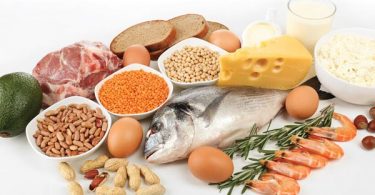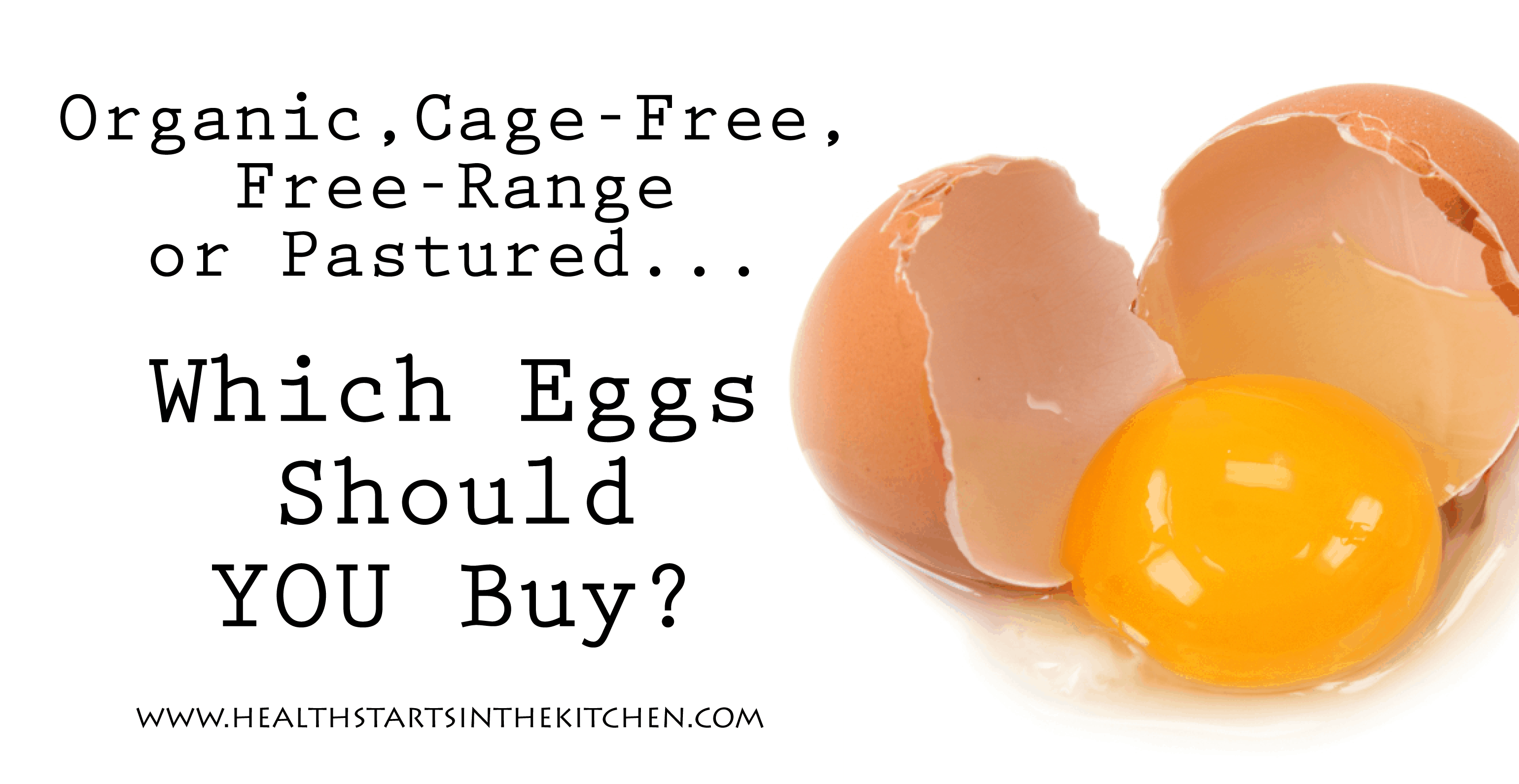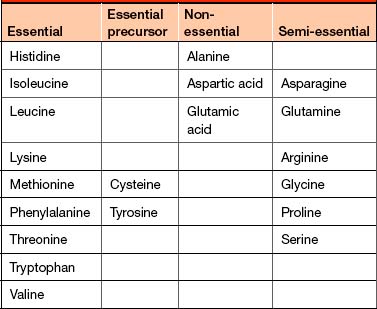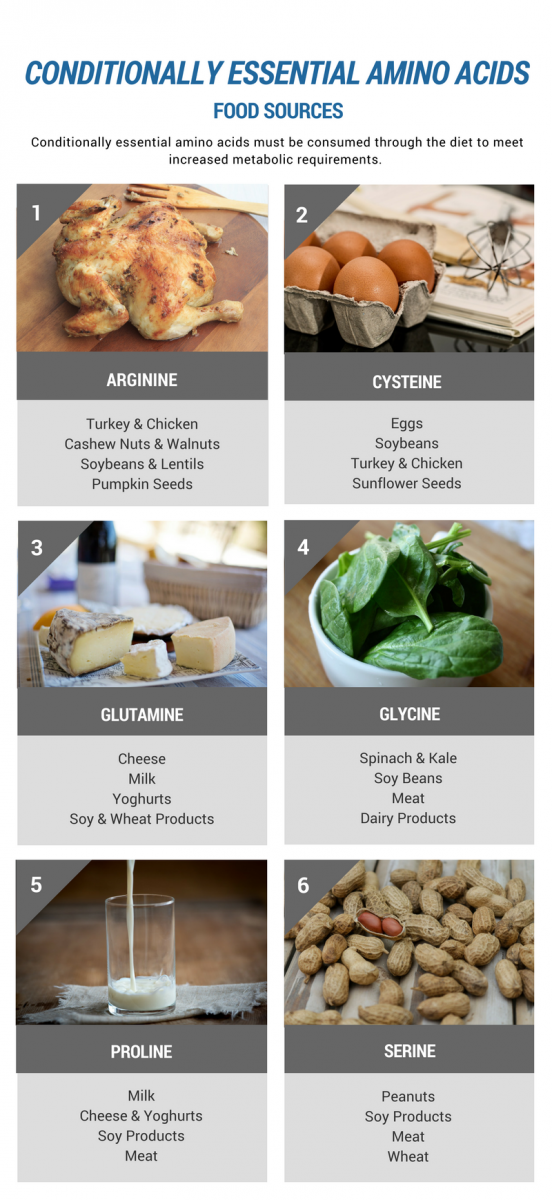40 what are amino acids on food labels
Pet Food Labels - General | FDA The pet food label contains a wealth of information, if one knows how to read it. ... such as vitamins and purified amino acids, may be used in pet foods labeled as organic. ... PDF Interactive Nutrition Facts Label - Food and Drug ... These amino acids fall into . two categories: • Essential amino acids. are required for normal body functioning, but they cannot be made by the body and must be obtained from food. Of the 20 amino acids, 9 are considered essential. • Nonessential amino acids. can be made by the body from essential amino acids consumed in food or in the normal
Interactive Nutrition Facts Label - Food and Drug ... 2% Cholesterol 5mg 19% Sodium 430mg 17% Total Carbohydrate 46g 25% Dietary Fiber 7g Total Sugars 4g 4% Includes 2g Added Sugars Protein 11g 10% Vitamin D 2mcg 20% Calcium 260mg 35% Iron 6mg 6%...

What are amino acids on food labels
Biochemistry, Essential Amino Acids - StatPearls - NCBI ... Essential amino acids, also known as indispensable amino acids, are amino acids that humans and other vertebrates cannot synthesize from metabolic intermediates. These amino acids must be supplied from an exogenous diet because the human body lacks the metabolic pathways required to synthesize these amino acids.[1][2] In nutrition, amino acids are classified as either essential or non-essential. Foods High In Essential Amino Acids - TheRescipes.info Where to Source the 9 Essential Amino Acids top . Amino acids are known as the building blocks of proteins.While the body needs 20 different amino acids to grow and function properly, there are 9 essential amino acids that your body can't produce without food.Each of the 9 essential amino acids have unique functions.Some essential amino acids are important for ... Amino Acids In Foods Chart - TheRescipes.info Amino Acid Chart | BeamZen new beamzen.com. Many people know that you can get all 22 amino acids from protein foods such as meats (beef, chicken, pork, lamb, etc.), fish, and even eggs, but some people do not know how many plant-based amino acids in food there are, let alone which ones for which kinds of foods; we will cover some of them here in chart form for easy use.
What are amino acids on food labels. 5 Foods High in Amino Acids - WebMD Because your body cannot make the nine essential amino acids itself, you need to get them from the foods you eat. The essential amino acids include: Histidine Isoleucine Leucine Lysine Methionine... Essential Amino Acids: Definition, Benefits and Food Sources Amino acids, often referred to as the building blocks of proteins, are compounds that play many critical roles in your body. You need them for vital processes such as building proteins, hormones,... Amino acid - Wikipedia Amino acids are organic compounds that contain amino (−NH + 3) and carboxylate (−CO − 2) functional groups, along with a side chain (R group) specific to each amino acid. The elements present in every amino acid are carbon (C), hydrogen (H), oxygen (O), and nitrogen (N) (); in addition sulfur (S) is present in the side chains of cysteine and methionine, and selenium (Se) in the less ... NCDA&CS - Kid's World - Understanding Food Labels Amino acids are building blocks that build, repair, and maintain every cell in your body. also supply energy but they have many other functions. Fats transport nutrients and they are a part of many body cells. Fats provide storage and insulation for your body. Carbohydrates and proteins that are not needed for energy are stored as fat.
Amino Acids - Genome.gov The term amino acid has seeped into common language, such as to market food products. You may have seen lists of foods with "high amounts of amino acids," such as eggs or quinoa. And now when you see those labels, you will know that they're referring to a fundamental component of your proteins that is not static, but functional on a daily basis. Protein and Amino Acids | Food and Nutrition Information ... Protein and Amino Acids, Chapter 10 Dietary Reference Intakes(link is external) National Academy of Sciences. Institute of Medicine. Food and Nutrition Board. Based on the label, is this food... ... a source of ... in orde label, this serving s protein sugar is the most abundant macronutrient in chicken. label are not listed by weight, because they are found in foods hose deficiency can lead to anemia (a deficiency of healthy rec insidered a major source of iron, one serving must have at leas ken is source of iron. 9.8 digging deeper: conceptual learning … How Do You Know Your Food's Nutrition Facts Label Is ... NIST's measurements are accurate to within 2% to 5% for nutrient elements (such as sodium, calcium and potassium), macronutrients (fats, proteins and carbohydrates), amino acids and fatty acids. As you may have noticed, most of your favorite food items have recently updated their nutrition facts labels.
Amino Acids: The Science Behind the Labels - Breaking Muscle These are the building blocks of proteins, called amino acids. Amino acids are organic compounds which contain at least one amino group (-NH2) and a carboxyl (-COOH) group. In the human genome, 20 amino acids are utilized to build proteins, and therefore are termed proteinogenic. CRN Guidelines for Labeling of Protein in Dietary ... While amino acids are the building blocks of protein, the addition of individual amino acids to a protein product may not stimulate protein synthesis in the body. High quality protein provides all of the amino acids required by the body, in the proper ratios, to allow for optimal rates of protein synthesis for physiological functions. The Association of American Feed Control Officials ... - AAFCO Amino Acids Animal Protein Products Brewers Products Canadian Food Inspection Agency Citrus Products Collective Terms Cottonseed Products Direct Fed Microbials Drugs, Medicated Feeds Enzymes Fats and Oils Feed Additives Feed Terms Fermentation Products Food Additives in CFR Forage Products Grain Products GRAS Notices GRAS Notifications to FDA Foods to which vitamins, mineral nutrients and amino acids ... Nutrient content claims: reference information Foods to which vitamins, mineral nutrients and amino acids may or must be added [D.03.002, FDR] Note: In the second column of this table, "mandatory" refers to nutrients that must be present in the food at levels specified in the Food and Drug Regulations (FDR). For some mandatory requirements, nutrients may not have to be added to achieve the ...
Patterns of free amino acids in German convenience food ... Free amino acids affect food palatability. As information on amino acids in frequently purchased pre-packaged food is virtually absent, we analyzed free amino acid patterns of 17 frequently ...
Amino Acids 101 - AminoFacts.org In truth, amino acids can be derived from multiple sources - some are obtained purely from plants and/or animals, and some are chemically synthesized in laboratories. Further, the means for extracting amino acids from plants or animals, and for creating them through lab-based chemical bonding can vary widely between amino acid manufacturers.
Amino Acids Function | Nutrition - Lumen Learning For proper nutrition choices foods are categorized using the Protein Digestibility-Corrected Amino Acid Score (PDCAAS). This score prioritizes protein sources by applying a score - up to 100 - based on digestibility and amino acid variety. The higher the score, the more digestible and diverse the amino acids in the food source.

Choose three nutritional labels off of food packaging. explain the ingredients and how to read ...
Protein claims - Specific nutrient content claim ... the label or the advertisement includes a declaration of the amount of the following essential amino acids contained in the food: histidine, isoleucine, leucine, lysine, methionine, phenylalanine, threonine, tryptophan and valine [B.01.305 (2) (b), FDR] the declaration is expressed in grams per serving of stated size [B.01.305 (2) (b), FDR]
Decoding Labels - AminoFacts.org Chemical Synthesis - a manufacturing method that produces synthetic amino acids in the laboratory by combining different carbon molecules using chemicals.This process is primarily used in pharmaceutical applications. Collagen - There are both plant-sourced and animal-sourced collagen products, which are very different.Collagen is a protein that is only found in animals - all collagen ...

"🥑Amino acids play a crucial role in almost every biological process in the body. They are the ...
NOW Supplement Label Transparency: Minerals & Amino Acids ... Each serving of the product has 400 mg of elemental magnesium and 2,265 mg citrate for a total of 2,665 mg magnesium citrate. For amino acid products†† Most of our amino acid products are either formulated as free-form amino acids or complexed with HCl (hydrochlorate). HCl accounts for some of the weight of the amino-acid-HCl complex.
Proteins and Amino Acids: Exploring the vital ... Some amino acids can be created by our bodies while others must come from the foods we eat. Amino acids that we have to eat are called essential amino acids. Non-essential amino acids can be synthesized, or made, by our bodies. A third type, semi-essential amino acids, are essential in certain circumstances while non-essential in others. For ...
PDF Food Labels - Central Valley High School •The food labels we see show us what our food is made of •The stuff we are studying today can be found on food labels . The molecules of life ... called amino acids •Try drawing a monomer of proteins - write it's name next to it •Add it to your notes Identifying the 4 Organic Macromolecules .
Amino Acids In Foods Chart - TheRescipes.info Amino Acid Chart | BeamZen new beamzen.com. Many people know that you can get all 22 amino acids from protein foods such as meats (beef, chicken, pork, lamb, etc.), fish, and even eggs, but some people do not know how many plant-based amino acids in food there are, let alone which ones for which kinds of foods; we will cover some of them here in chart form for easy use.
Foods High In Essential Amino Acids - TheRescipes.info Where to Source the 9 Essential Amino Acids top . Amino acids are known as the building blocks of proteins.While the body needs 20 different amino acids to grow and function properly, there are 9 essential amino acids that your body can't produce without food.Each of the 9 essential amino acids have unique functions.Some essential amino acids are important for ...
Biochemistry, Essential Amino Acids - StatPearls - NCBI ... Essential amino acids, also known as indispensable amino acids, are amino acids that humans and other vertebrates cannot synthesize from metabolic intermediates. These amino acids must be supplied from an exogenous diet because the human body lacks the metabolic pathways required to synthesize these amino acids.[1][2] In nutrition, amino acids are classified as either essential or non-essential.











Post a Comment for "40 what are amino acids on food labels"